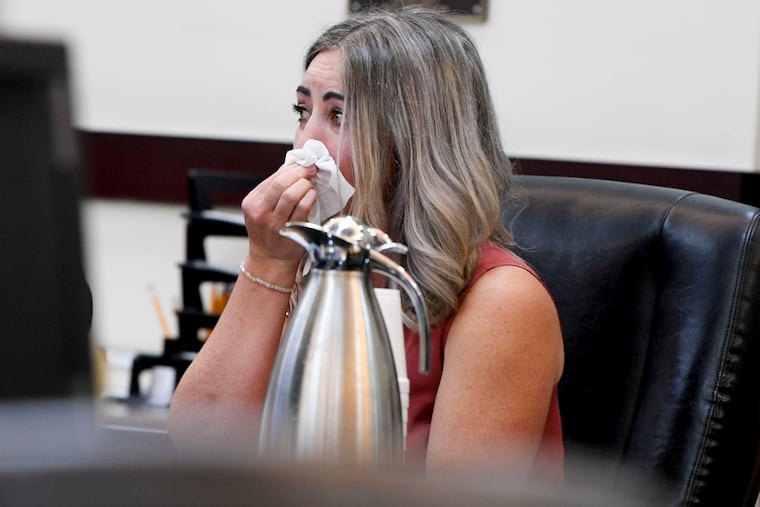Why medication errors continue to harm patients
A mix of flawed systems and complacency have resulted in patient harm, experts say.

Six years ago, a nurse at a Tennessee hospital accidentally gave a patient a powerful muscle-paralyzing drug. The patient stopped breathing and later died.
The nurse, RaDonda Vaught, was convicted of negligent homicide and sentenced last year to three years’ probation. Criminal charges over medical errors are rare, and the prosecution evoked fear in nurses nationwide. Patient safety advocates argued it sent the wrong message and would deter hospitals from admitting mistakes, which would not protect patients from medication errors.
Four years after Vaught’s deadly error, a similar mistake at Mercy Fitzgerald Hospital in Darby, nearly killed patient Didier Epopa and left him with irreversible brain injuries.
Epopa, 55, recently filed a medical malpractice lawsuit against the hospital. His lawyer, Eric Zajac, said the suit is among a growing number of Pennsylvania cases related to serious medication errors that he’s filed in recent years.
Zajac noted that the drug errors in his caseload share a common denominator: They are preventable.
“The health-care provider, whether it’s a pharmacist, hospital or doctor, either doesn’t have safeguards in place — or, they have them in place, but they aren’t following them,” said Zajac, whose practice, Zajac & Padilla, is based in Ardmore.
Life-and-death drug errors
In both the Tennessee case and Epopa’s, the errors were made in the use of neuromuscular-blocking drugs, which hospitals classify as “high-alert medications” because mistakes in their use can cause catastrophic harm or death.
Vaught, then a nurse at Vanderbilt University Medical Center in Nashville, mistakenly withdrew a vial of the paralytic vecuronium from a computerized medication cabinet. She typed “VE” into the search function, intending to take out Versed, a sedative to calm the 75-year-old patient who was about to be scanned in an MRI-like machine.
In the Philadelphia-area case, a lawyer for Mercy Fitzgerald revealed in a court filing that a pharmacy intern had mislabeled an IV bag. It was supposed to contain an antiviral but instead contained cisatracurium, a muscle-paralyzer similar to vecuronium.
Hospitals use these paralytics to keep patients still during surgery or to relax the throat when inserting a tube through the windpipe, known as endotracheal intubation. Even then, the drug is typically administered under the supervision of an anesthesiologist.
Cruel ‘air hunger’
Cisatracurium has also been at the center of controversy over lethal injections.
In 2018, Nevada prison officials intended to use it as part of a three-drug execution protocol, in conjunction with the sedative midazolam and the synthetic opioid fentanyl, to put a prisoner to death.
The pharmaceutical companies that make the medications sued Nevada because they didn’t want their products used in lethal injections.
A state judge ruled against the use of cisatracurium after hearing medical testimony that it could cause agonizing “air hunger” in fully alert prisoners — a violation of the U.S. Constitution, which prohibits “cruel and unusual punishments.”
Nevada’s cisatracurium supply expired in 2019. About a year later, as part of a legal settlement with the drug manufacturers, the state relinquished its unused cisatracurium and the other two medications.
Flawed systems fail patients
High-alert medications should come preformulated whenever possible, not in a powder or small vial that a hospital pharmacist needs to dilute and mix with saline in an IV bag. This is the recommendation of ECRI, a Plymouth Meeting-based national nonprofit that focuses on patient safety.
In addition, hospitals should update computerized medication cabinets so practitioners must type in five letters instead of two or three to avoid retrieving medications that look and sound alike, according to ECRI’s recommendations.
Vaught, who lost her nurse’s license and job in Tennessee, admitted her mistake. She told state authorities that she got “distracted” by a trainee while operating the automated drug dispenser and had become “complacent” in her job.
But she said the fault was not hers alone. The system failed, too.
During an interview with an investigator, Vaught said, “Ultimately, I can’t change what happened. … The best I can hope for is that something will come of this, so a mistake like that can’t be made again.”
ECRI president and CEO Marcus Schabacker agrees that system failures, not individuals, are at the root of medication errors.
“This is not about catching someone doing something wrong,” Schabacker said. “This is about understanding why a miss or near miss happens and then putting things in place to avoid a similar mistake.”
Schabacker noted that there hasn’t been a deadly accident in commercial air-safety traffic in the United States since 2009. Yet, each year, about 100,000 patients die of preventable medical errors in America. Like commercial aviation, health-care institutions should scrutinize not only errors, but near errors, as well, so safety gaps can be closed tight, he said.
An anesthesiologist and intensive care specialist, Schabacker said hospitals must employ additional safeguards for cisatracurium and other high-alert medications, including limiting access and double verification by two qualified practitioners prior to dispensing and administering. Hospitals also need mechanisms to ensure that those policies are strictly followed.
Hospital administrators who want to prevent errors must set the tone and atmosphere for staffers to come forward and report instances in which a mistake occurred or nearly did, without fear of blame or discipline.
Until that happens, medical errors, particularly those related to medications, will continue, Schabacker said.
“We, as a medical profession, have just become too complacent,” he said.